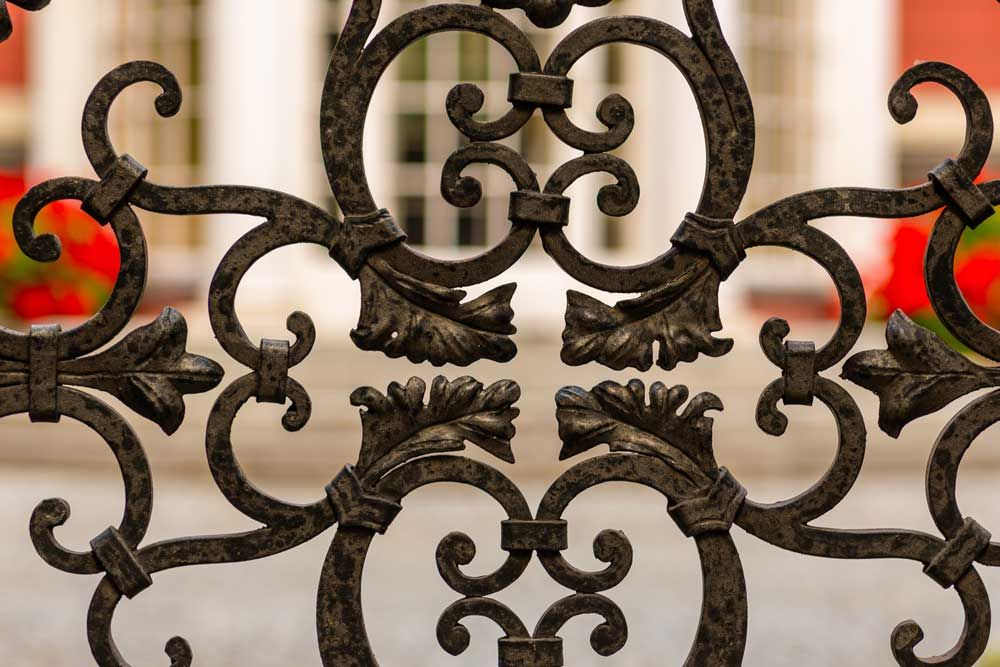
Paris Behind the Ironwork
While war, catastrophic fires, and plague altered the face of many European cities, it was the ambition of its grandiose rulers that shaped the cityscape of Paris. While the timber dwellings of the Medieval era are mostly gone, the cathedrals and Roman ruins remain, and you can still walk through some neighborhoods and feel like a fin-de-siecle flaneur as you stroll under the diffuse light of an arcaded street, along a broad boulevard flanked by massive stone edifices, down the cobblestoned and iron-filigreed alleyways of a decadent empire.
Though the truth is that Paris is always changing, the city feels eternal, timeless, as though every moment of its history exists at once. Roman ruins, Medieval cathedrals, pre-revolution palaces, Second Empire-era mansions, and a hundred years of glass and steel all stand monumental and enduring as modern life rushes by in cars and buses, on mobile phones, across digital billboards and computer screens. It is a city constantly reborn, but it never sheds its old skin completely.
I ponder all of this as I prepare for another day of strolling the lesser-known arrondissements of Paris, the aroma of espresso wafting up from the café below the fifth-story window of my hotel room. Standing on the balcony of this converted aristocratic estate of the Second Empire, I wrap my hands around the wrought iron grille and feel like a languid and roguish son of some Vicomte with no useful occupation beyond haunting Paris in a black top hat and frock coat.
There’s something strangely out of place about these balcony grilles, but I could never tell exactly what. The design predates Art Nouveau by a couple decades, but they bear the same delicate curves and naturalistic patterns of that movement that began some twenty years after the urban planning reforms that gave rise to these massive buildings that line the city’s wide boulevards. Like Art Nouveau works, the design of the grilles seems at once far too modern to adorn this ancient-looking stone structure, yet they also emanate a retro charm.
The design, in short, is timeless. The graceful curve of the metalwork, the organic flourishes suggesting curling vines and angled tree branches, the insectile cartouches that seem modeled after the carapaces of a species of creature not native to planet Earth. It stands like the portal into a fey realm, the fluid, floral flourishes not so much resembling bugs or plants or fairies as appearing to have been designed from the perspective of some otherworldly intelligence and aesthetic sensibility.
So when I come down to the street to find a man in blue coveralls propping a ladder against one of the balconies, I’m intrigued. I have to talk to him. I stand and watch him work, climbing the ladder with a balcony grille in hand, dangling over the side. I watch him bolt it in place, wipe it down with a rag, stand back and admire his work.
He descends, all the while glancing down at me suspiciously, perhaps waiting for me to ask directions to the Eiffel Tower or Louvre.
“I’m sorry to bother you, I was just admiring the metalwork.”
He nods and says something too low for me to hear. He polishes the balcony one last time and descends the ladder. When he reaches the ground, I ask, “Lefuel?”
It takes him a moment to unravel my pronunciation and realize that I was asking if the grille had been created by Hector Lefuel, the Second Empire architect.
“No, no,” he says, rising to his feet. “Not Lefuel. This one I made myself. With some help, of course, from my workshop. They are all very talented, as you can see.”
I look over the structure again. The scrollwork, the cartouches, the iron casting techniques, even the way the pieces were joined together, it all speaks to a mid-19th century origin.
Strolling the city that morning, I couldn’t help but wonder how much of its architecture was original and how much was a recreation. And I began to wonder if it mattered. As much as it had seemed to me that Paris was a living organism constantly reinventing itself but never losing its connection to its past lives, the reality was far more beautiful. A city like this doesn’t just happen. Hundreds of artisans maintain and recreate the beauty of ages past. Even as the future unfolds all around them, the techniques of the past, the passion of generations of artisans, lives on.
The Second Empire style and the later Art Nouveau movement emerged during a time of rapid change, too rapid for some. France was losing some of its prestige as the British Empire and the United States raced forward on steam-powered legs of steel. France turned toward a different future, one where art and philosophy were central to life. But as Paris beautified itself, it lost touch with its history. What else did it lose? What am I losing, I wonder as the world hurtles itself forward all around me, and how can I anchor myself to something beautiful, something that will last forever? I won’t always have Paris, but I’ll always have the feel of that balcony grille, the story it told, the work of an artisan that connected me to a tradition I thought lost to the ages.

